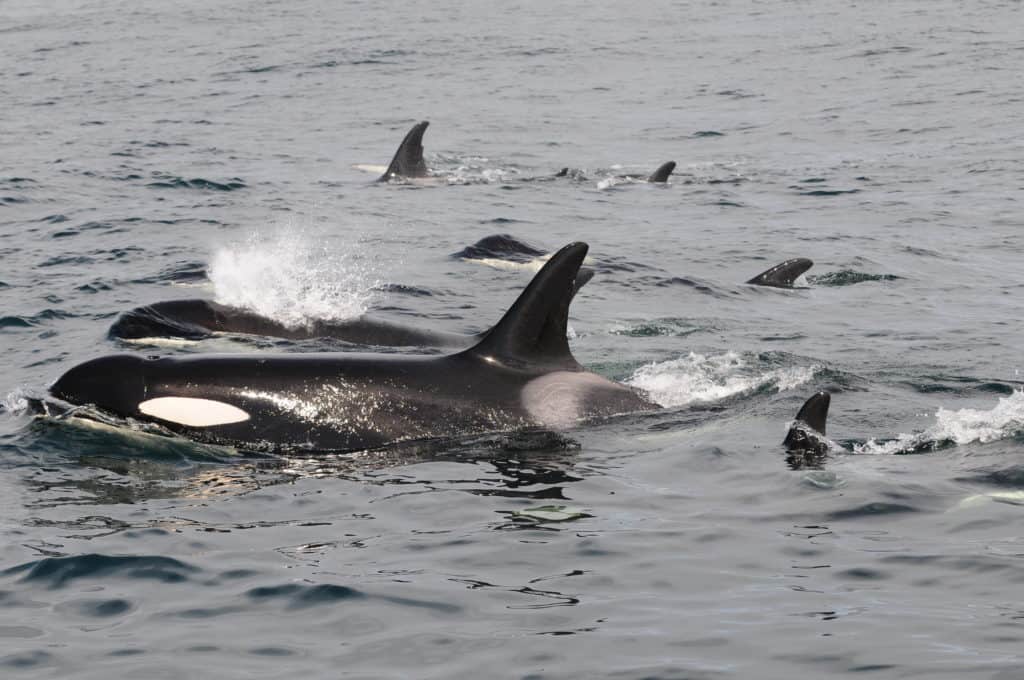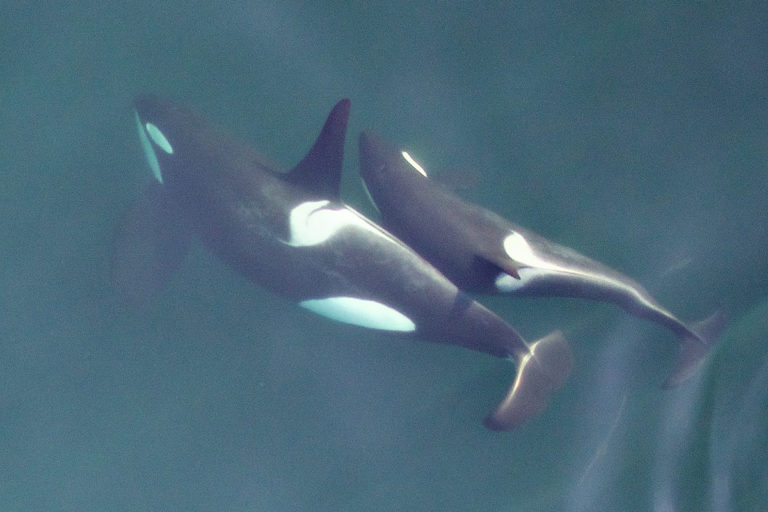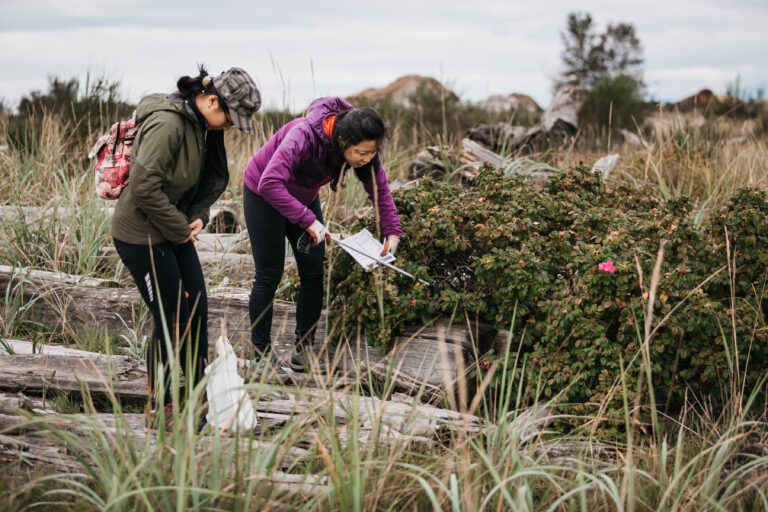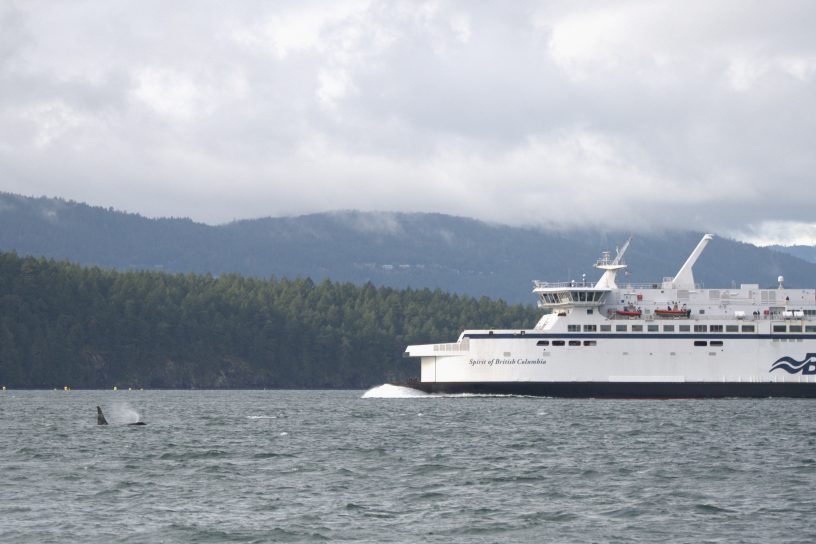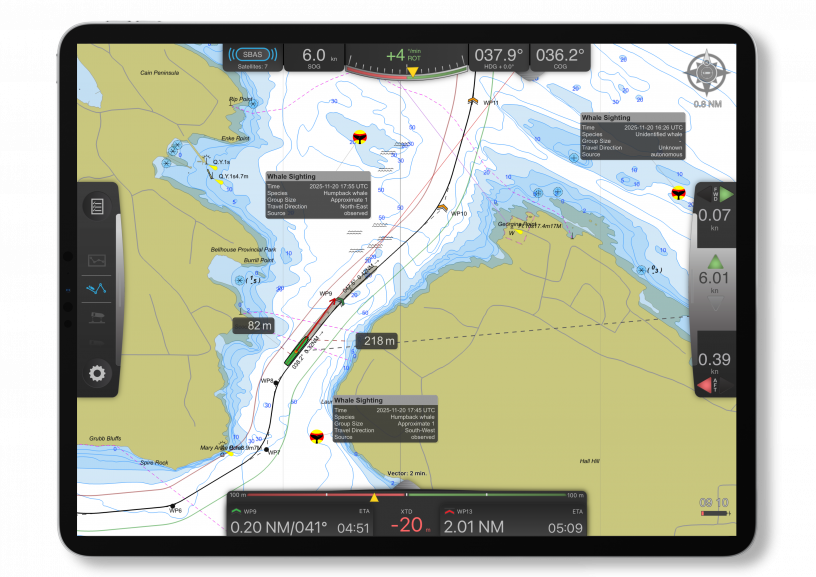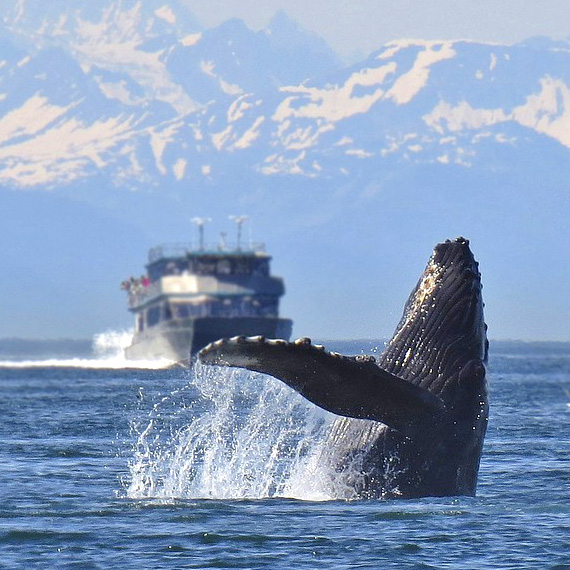Orca Action Month: Why the Future of Killer Whales Needs You

There’s a story unfolding just off our coast – one of resilience and urgency.
Imagine this: A young killer whale swims beside her grandmother, learning ancient migration routes and how to find the tastiest Chinook salmon. Her family sings through the waves in a language all their own. These moments – rich in culture, connection, and survival – are part of what makes killer whales so extraordinary.
Every June, Orca Action Month is a chance to celebrate these incredible animals and rally together to protect them – especially the critically endangered Southern Resident killer whales.
So, who are these whales? What’s threatening their survival? And most importantly – what can you do to help?
Why Killer Whales Matter
Whales are more than just magnificent marine mammals, they’re keystone species. Much like the key stone in an arch – when you remove it, and the whole structure can collapse.
The Pacific Northwest is home to four distinct ecotypes of killer whales:
- Southern Residents: critically endangered and deeply reliant on Chinook salmon.
- Northern Residents: threatened, fish-eaters.
- Bigg’s (Transient) Orcas: not listed, mammal-hunting whales.
- Offshore Orcas: threatened, a mysterious group that feeds on sharks and lives mostly offshore.
As top predators and nutrient cyclers, whales help regulate food webs and boost carbon storage by fueling the growth of plankton – tiny organisms that absorb massive amounts of carbon dioxide.
Whales play a crucial role in fighting the very problem that threatens their survival: anthropogenic climate change. When we protect whales, we protect our ocean – and our future!
A Culture on the Edge
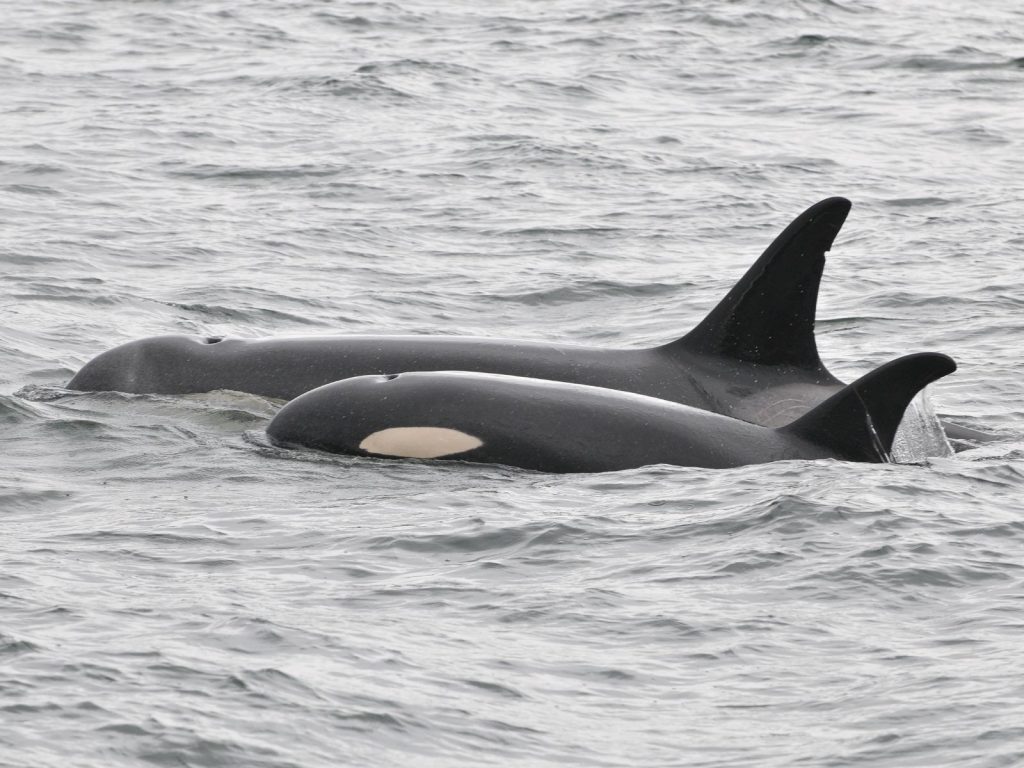
Killer whales live in tight-knit family groups called matrilines, led by mothers and grandmothers. These matriarchs, some in their 80s and 90s, guide their pods through generations, passing down survival knowledge. Scientists believe this long post-menopausal life provides critical leadership and stability – like seasoned captains at the helm of the pod.
But with only 74 Southern Residents remaining, we stand to lose more than just individual whales – we risk losing an entire culture, a unique language, and a vital ecosystem engineer.
All killer whale populations face overlapping threats that compound one another in deadly ways, including:
- Prey depletion
- Toxic pollutants in their food and water
- Ship strikes and entanglement in fishing gear
- Underwater noise pollution that disrupts feeding and communication
But for Southern Residents, these challenges are especially dire.
Threats on the Rise
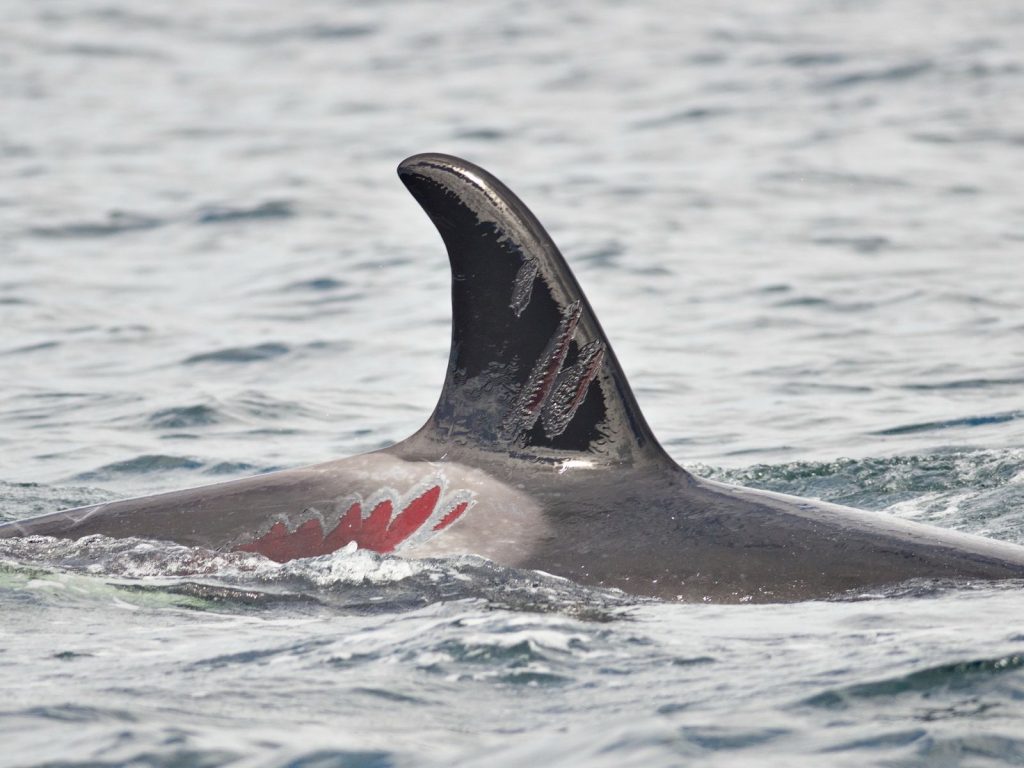
Imagine you’re trying to get home, but every time you turn, someone cuts you off. You can’t see where you’re going, the noise around you is deafening, and there’s a massive cruise ship heading your way. Suddenly, finding your family, catching dinner, or staying on course becomes a real challenge. Increased underwater noise forces killer whales to spend more energy for less food – a dangerous combination for a population already under stress.
In Canada, these threats are on the rise. Following the Trans Mountain pipeline expansion in 2024 and shifting trade priorities, large vessel traffic in Canada’s Pacific ports is expected to rise by at least 18%. This surge brings increased noise, more risk of strikes, and additional stress to areas like the Salish Sea – a critical habitat for the Southern Residents.
South of the border, the U.S. government has slashed funding to the National Oceanic and Atmospheric Administration (NOAA) – the agency responsible for weather tracking, fisheries management, and marine species protection – by more than 27%. The cuts resulted in the termination of 880 employees and eliminated NOAA’s Oceanic and Atmospheric Research office, the agency’s scientific core.
NOAA is the backbone agency for U.S. environmental science and management in the ocean and climate space. Dismantling it breaks the vital link between research and regulation and disables the systems that track salmon populations, monitor ocean noise, and enforce vessel speed rules – all of which directly impact killer whale survival. Without this scientific support, protections fall apart.
Salmon is Key to Survival
Nutritional stress from lack of prey is one of the main factors limiting population growth in endangered Southern Resident killer whales. A study from the University of Washington found that up to 69% of Southern Resident pregnancies fail, and low Chinook salmon availability is a major cause. Without enough food, pregnant whales experience late-stage pregnancy loss and higher rates of calf mortality.
Rebuilding Chinook salmon runs is one of the most effective ways we can support the recovery of this endangered population. More salmon means more energy for hunting, higher reproductive success, and stronger calves.
Hope On the Horizon
“[Right now there are] 11 whales under six years old and seven of those are female. That’s huge. So when we say recovering this population, what we really mean is giving those seven whales what they need to reach adulthood.”
– Donna Sandstrom, founder and executive director of The Whale Trail
For endangered species, the presence of young females is especially important for recovery. Female whales play a critical role in the population’s future by giving birth and raising calves. So, the fact that seven of the 11 juveniles are female is a promising sign there’s potential for population growth. But only if these young whales survive to adulthood. That’s why supporting them now is so essential to recovery.
Five Way YOU Can Help Today
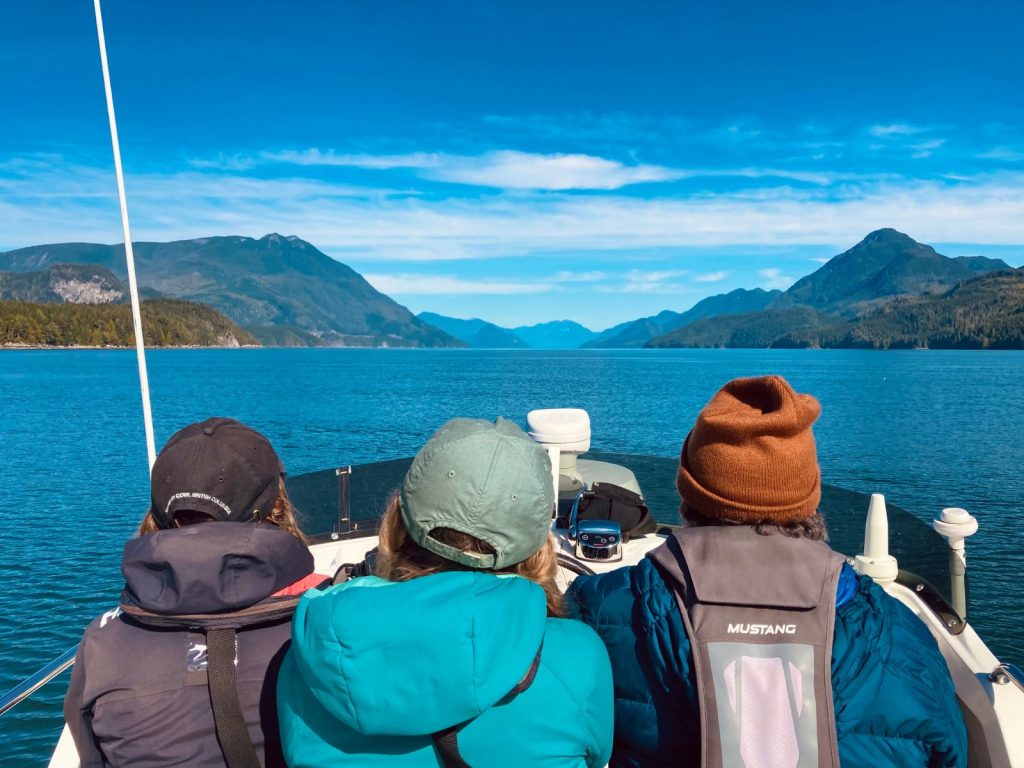
Killer whales need your help to navigate this growing sea of threats.
Make Ocean-Friendly Food Choices
Southern Residents rely heavily on Chinook salmon, and those salmon need our help too. When grocery shopping or dining out, look for the Ocean Wise Recommended symbol to support sustainable seafood practices. Find Ocean Wise recommended seafood near you!
Report Your Sightings
Did you know? Every year, over 20,000 whales are struck by vessels and about 300,000 whales, dolphins, and porpoises die worldwide after becoming entangled in ocean debris and fishing gear – and experts estimate only one in ten incidents are reported.
If you’re near the water, download the free Whale Report app. It lets you log sightings in real time, triggering alerts to nearby vessels so they can slow down or reroute – helping avoid collisions and contribute to research.
Symbolically Adopt a Killer Whale
By symbolically adopting a killer whale today, you’re protecting not only them, but also thousands of other whales each year from deadly ship strikes and entanglement!
Speak Up and Show Up
Join or lead an Ocean Wise Shoreline Cleanup and research conservation groups in your area. Your time and support fund vital programs.
Email your representatives to express support for marine science funding – public pressure works and your voice matters
Be Whale Wise
Boaters, take note: follow Be Whale Wise guidelines to reduce your impact. Stay at least 400 metres from killer whales, slow your speed, and reduce noise by avoiding sudden course changes or idling near pods. Visit BeWhaleWise.org to learn more.
Spot discarded fishing gear or plastic? Report it to local authorities or clean up groups to help prevent whale entanglements.
By: Olivia Heintzman, Ocean Wise Research Assistant
Posted June 13, 2025 by Kim Bricker
